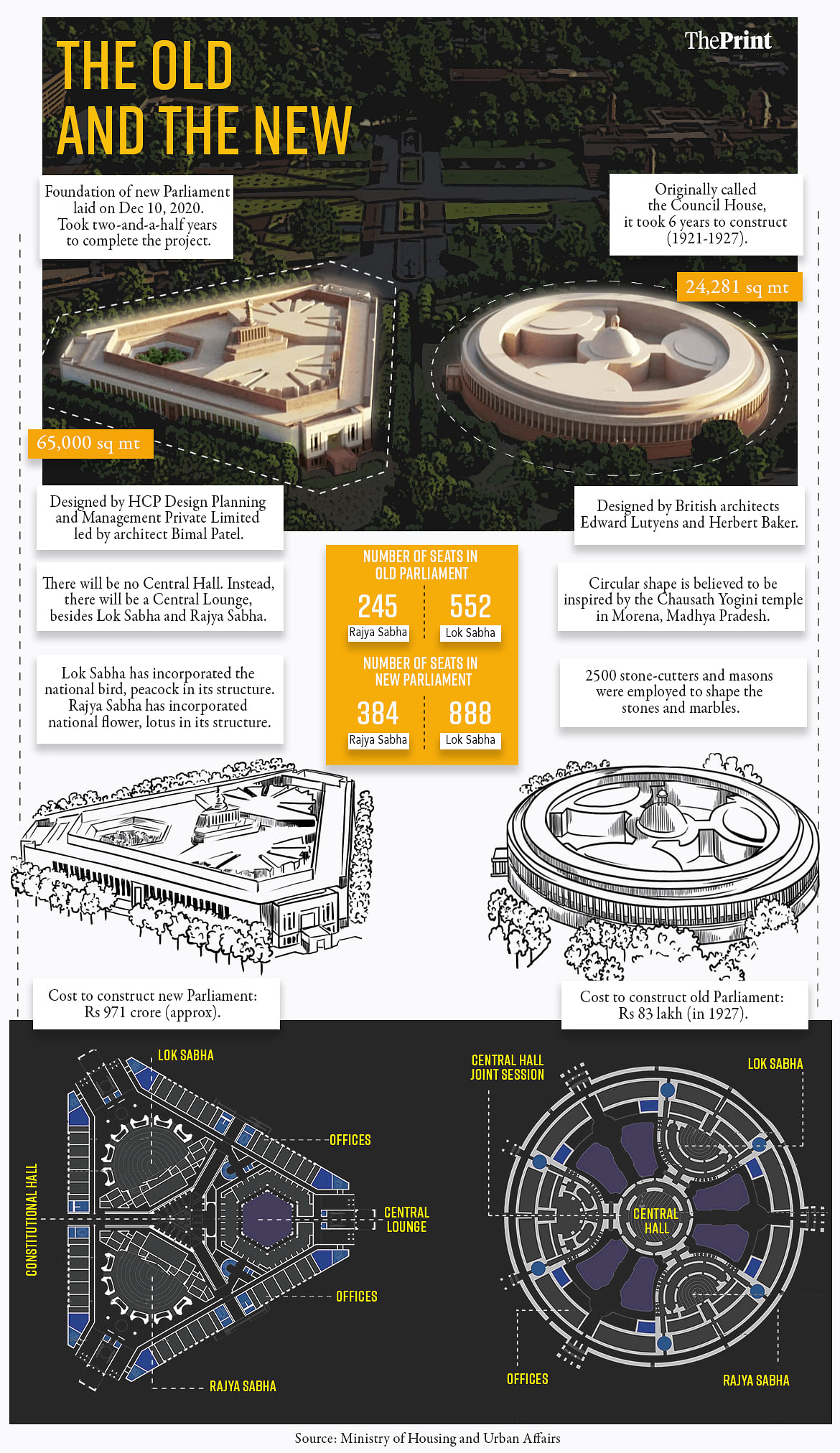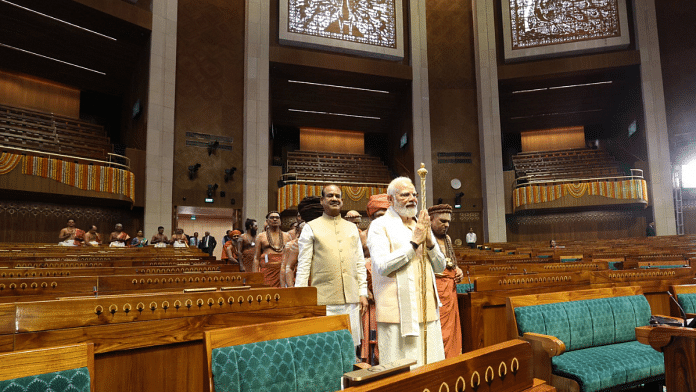New Delhi: Amid drum beats that filled the air on a bright Sunday morning in New Delhi, Prime Minister Narendra Modi entered the premises of the new Parliament building, holding the ‘sengol‘ — the gold-plated silver sceptre — as he inaugurated the iconic structure.
Coinciding with the birth anniversary of Hindu Mahasabha leader Vinayak Damodar Savarkar, the inauguration kicked off with Modi bowing to pay respects to Mahatma Gandhi.
Soon after, the Prime Minister, flanked by Lok Sabha Speaker Om Birla, took part in a havan – a fire ritual performed with mantras and chants on special occasions.
The five-foot-long sceptre was then handed over by seers, who had flown in from various Adheenams (muths) based out of Tamil Nadu, to the Prime Minister, who slowly moved towards the new Lok Sabha chamber to place it next to the Speaker’s seat.
The new Lok Sabha chamber dons the theme of peacock – the national bird, while the new Rajya Sabha chamber has been fashioned after the lotus — the national flower.
‘Sengol’ is the Tamil Chola Empire tradition of anointing a new ruler by vesting the sceptre in the hands of a new ruler. After having a last glance at the ceremonial sceptre, which was made by Chennai-based jeweller Vummidi Bangaru, PM Modi proceeded to attend a prayer meeting that, according to the government, witnessed representatives from all religions.

Also Read: High-tech features, seating for 1,272 & historic ‘sengol’ — how new Parliament compares with old
Controversy around ‘sengol’
Prior to the prayer meeting, Modi went on to greet workers involved in the construction of the new building, including Muzzafar Khan from Jharkhand — a mechanic who monitored and executed repair work for machines — and Dharmendra, from Delhi, who carried out gas welding work.
The PM also unveiled a commemorative plaque and dedicated the new Parliament building to the nation.
On Friday, the PM had met seers from Tamil Nadu-based Adheenams at his official residence, who amid religious chants, handed over the sacred sceptre to Modi. Sixty seers have been brought to Delhi from various Adheenams across the country. A majority of them are from Tamil Nadu.
The ‘sengol’ narrative was mired in controversy after senior Bharatiya Janata Party (BJP) leaders, including Union Home Minister Amit Shah, said that the ritual had previously taken place to signify the transfer of power from the British to India with Mountbatten handing over the spectre to Nehru on 14 August, 1947 — a claim the Congress has disputed.
Leaders of the Congress said there was no evidence to back Shah’s statement and alleged that the BJP-led government was using the sceptre to push its political agenda in Tamil Nadu.
Meanwhile, besides the PM, those who participated in the ceremony included Shah, BJP national president J.P. Nadda and Maharashtra Chief Minister Eknath Shinde of the Shiv Sena (Shinde faction).
However, 20 Opposition parties — the Congress, the Aam Aadmi Party (AAP) and Dravida Munnetra Kazhagam (DMK), to name a few — boycotted the inauguration, accusing the BJP of insulting President Droupadi Murmu by not inviting her for the inauguration.
In a joint statement four days ago, 19 Opposition parties had said: “When the soul of democracy has been sucked out from Parliament, we find no value in a new building.”
They added that Parliament “cannot function” without the President, calling Modi’s leading role in the ceremony a “direct assault” on India’s democracy.
New Parliament structure
Apart from increased seats — 888 from 552 and 384 seats from 245 — in the Lok Sabha and the Rajya Sabha, respectively, both the halls have been furnished with hand-knotted carpets that were weaved by close to 900 artisans from Uttar Pradesh.
The foundation stone for the new building was laid in late 2020 and it was built at a cost of approximately Rs 971 crore.
Material was sourced from around the country to be used in the new Parliament building including bamboo from Tripura which was used for the flooring, red-white sandstone from Rajasthan’s Sarmathura, and carpets from Uttar Pradesh’s Mirzapur.
With a built-up area of 65,000 square metres, the requirement for the new building arose due to a lack of adequate seating in the older building along with structural and other issues, according to the Central Vista website for the new Parliament building.
(Edited by Richa Mishra)
Also Read: ‘Bogus claims’ vs ‘hater of Hindu traditions’ — Congress & BJP spar over history of ‘sengol’



